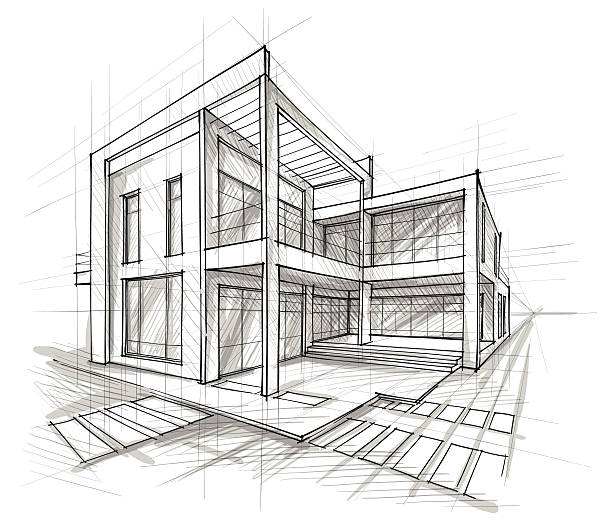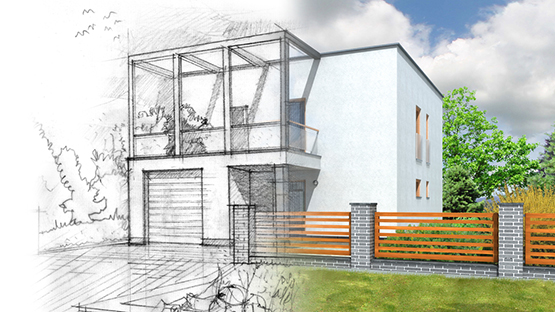The Creative Refine Behind Successful Projects from CDA Architects
The Creative Refine Behind Successful Projects from CDA Architects
Blog Article
A Thorough Review of Building Designs and Their Impact on Modern City Preparation and Advancement
Architectural designs have actually long offered as a mirror to the societal worths and technical developments of their time, playing an essential duty in forming modern-day city planning and development. From the magnificence of Neoclassicism to the utilitarian approach of Brutalism, each design has actually presented distinct principles that influence city appearances and performance.
Historical Summary of Architectural Designs

As societies transitioned via the Center Ages, Gothic design emerged, identified by its verticality and detailed describing, matching the spiritual aspirations of the age. The Renaissance marked a resurgence of classical ideals, combining art and design in innovative methods that affected subsequent designs across Europe.

Today, building styles remain to develop, driven by globalization and sustainability problems, reflecting a dynamic interaction in between heritage and development. This historic summary emphasizes the importance of design as a mirror of social evolution and as a driver for metropolitan advancement.
Secret Architectural Styles Explained
The variety of building styles mirrors the myriad impacts that form our developed setting, each symbolizing unique features and cultural relevances. Secret architectural styles include Classical, Gothic, Baroque, Modernism, and Postmodernism, each representing special historical contexts and aesthetic viewpoints.
Classic architecture, rooted in ancient Greece and Rome, highlights symmetry, proportion, and the usage of columns (cda architects). In contrast, Gothic style, prospering in the center Ages, is identified by sharp arcs, ribbed safes, and flying buttresses, creating an aerial quality in basilicas. Baroque design, emerging in the 17th century, is noted by majesty, elaborate ornamentation, and a vibrant interplay of light and shadow
Modernism, which acquired momentum in the early 20th century, focuses on function over form, making use of brand-new materials like steel and glass to produce minimalist frameworks. Postmodernism, responding against the austerity of Innovation, accepts eclecticism and historical reference, frequently incorporating lively aspects and irony.

Influence On Urban Planning
Fit the growth of cities, architectural designs considerably affect city planning decisions. The option of building style often dictates the looks, functionality, and total character of urban atmospheres. As an example, modernism, with its focus on minimalism and capability, encourages open areas and the integration of innovation, forming city layouts that prioritize effectiveness Read More Here and ease of access. Alternatively, conventional styles might highlight historic conservation, resulting in urban styles that maintain social heritage and advertise pedestrian-friendly settings.
Furthermore, architectural designs can influence zoning regulations and land use plans. Urban organizers must consider the dominating architectural patterns when developing districts, guaranteeing that new developments balance with existing structures. This factor to consider promotes natural urban landscapes and enhances community identification.
The application of specific building styles can additionally affect socioeconomic aspects within a city. High-end modern styles may bring in wealthy citizens and services, leading to gentrification, while a lot more budget-friendly housing solutions could prioritize practical and lasting designs to suit diverse populaces. cda architects. Eventually, the interplay in between architectural designs and urban preparation creates vibrant cities that reflect both historic context and contemporary requirements, forming the lived experiences of their occupants
Sustainability and Modern Architecture
Building designs play a crucial role in attending to modern obstacles, specifically in the realm of sustainability. As metropolitan areas broaden and environmental concerns increase, modern design significantly embraces lasting style concepts that focus on energy effectiveness, source conservation, and very little ecological effect.
Contemporary building movements, such as biophilic style and environment-friendly architecture, advocate for structures that integrate with their environments, making use of all-natural materials and promoting biodiversity. These styles usually incorporate sustainable power resources, such as photovoltaic panels and wind turbines, to decrease reliance on nonrenewable fuel sources and reduced carbon impacts.
Moreover, the assimilation of advanced modern technologies, such as wise structure systems, boosts power monitoring, maximizing resource usage while making sure resident convenience. Cutting-edge water monitoring strategies, including rainwater harvesting and greywater recycling, additional add to lasting metropolitan settings.
Especially, sustainability expands past ecological problems; it encompasses social and financial measurements too. By why not find out more cultivating neighborhood wellness and promoting inclusivity, modern architectural designs line up with sustainable development goals. The development of architectural techniques proceeds to shape durable cities that not just satisfy the requirements of the present yet likewise protect the future for generations to come.
Community Involvement in Style
Community engagement in layout offers as an important bridge between engineers and the populations they serve, making certain that the constructed environment mirrors the requirements and goals of its individuals. This collaborative procedure invites area participants to contribute their understandings and preferences, cultivating a sense of possession and responsibility towards the areas they inhabit.
Efficient area interaction uses different approaches, such as workshops, surveys, and public discussion forums, to gather diverse perspectives. These techniques facilitate a two-way discussion, allowing designers to recognize regional contexts while encouraging citizens to voice their worries and desires. This inclusivity not only boosts the design high quality yet also advertises social equity by dealing with the special challenges dealt with by marginalized teams.
Moreover, neighborhood involvement can lead to ingenious remedies that might not emerge in a standard layout process. By integrating regional expertise and cultural worths, engineers can develop spaces that resonate more deeply with individuals, improving functionality and sustainability. Inevitably, prioritizing community engagement in design processes leads to atmospheres that support social communications, support well-being, and enhance neighborhood ties, consequently playing an essential duty fit modern-day city landscapes.
Conclusion
Building designs have actually greatly affected modern-day city preparation and advancement, mirroring advancing social and technical contexts. The assimilation of historic aesthetics with modern demands fosters urban settings that focus on sustainability and area interaction. As cities remain to grow and adapt, the recurring discussion in between building heritage and contemporary design principles will certainly continue to be crucial in developing inclusive, dynamic rooms that improve lifestyle and promote social equity. The get more future of urban development joints on this unified equilibrium.
Report this page